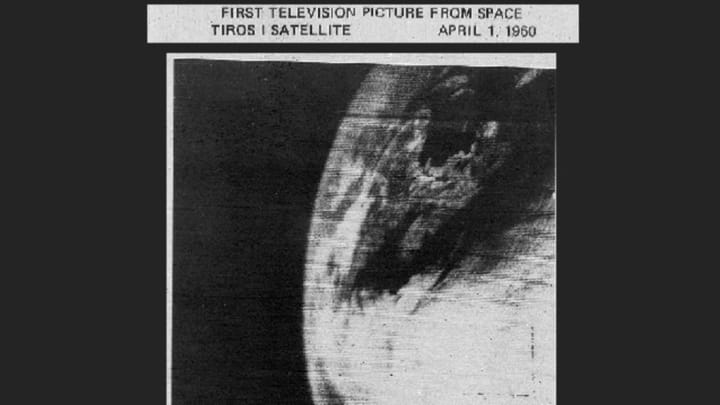On This Day in 1960, NASA Took the First TV Picture from Space

On April 1, 1960, NASA launched TIROS-1 (Television Infrared Observation Satellite), the nation's first weather satellite. Designed by RCA, TIROS-1 was an experiment intended to sort out whether satellites would be useful in weather forecasting, and to learn more about satellite performance in general.
TIROS-1 itself weighed 270 pounds, and was equipped with dual TV cameras. The cameras could record black-and-white images to tape, which could be played back and relayed to ground stations when the satellite was in a favorable broadcasting position. It was powered by a battery fed by a massive array of solar cells. Although it only operated for 78 days, the satellite was a massive success, and proved that space-based images of Earth were useful in predicting weather and tracking storm systems.
NASA/NOAA (Public Domain)
On the same day it launched, TIROS-1 sent back the image at the top of this post. It was the first TV image of the Earth taken from orbit. TIROS-2 launched in November 1960 and failed in January of 1961. TIROS-3 went up and lasted 230 days, and discovered Hurricane Esther. TIROS derivatives continued to launch through 1998, and TIROS-1 is still up there. It's the 11th oldest human-made object in orbit.
Here's a short clip explaining TIROS-1:
And here's a longer RCA film with more on the overall program:
And finally, here's a short NASA documentary produced on the 50th anniversary of TIROS-1: